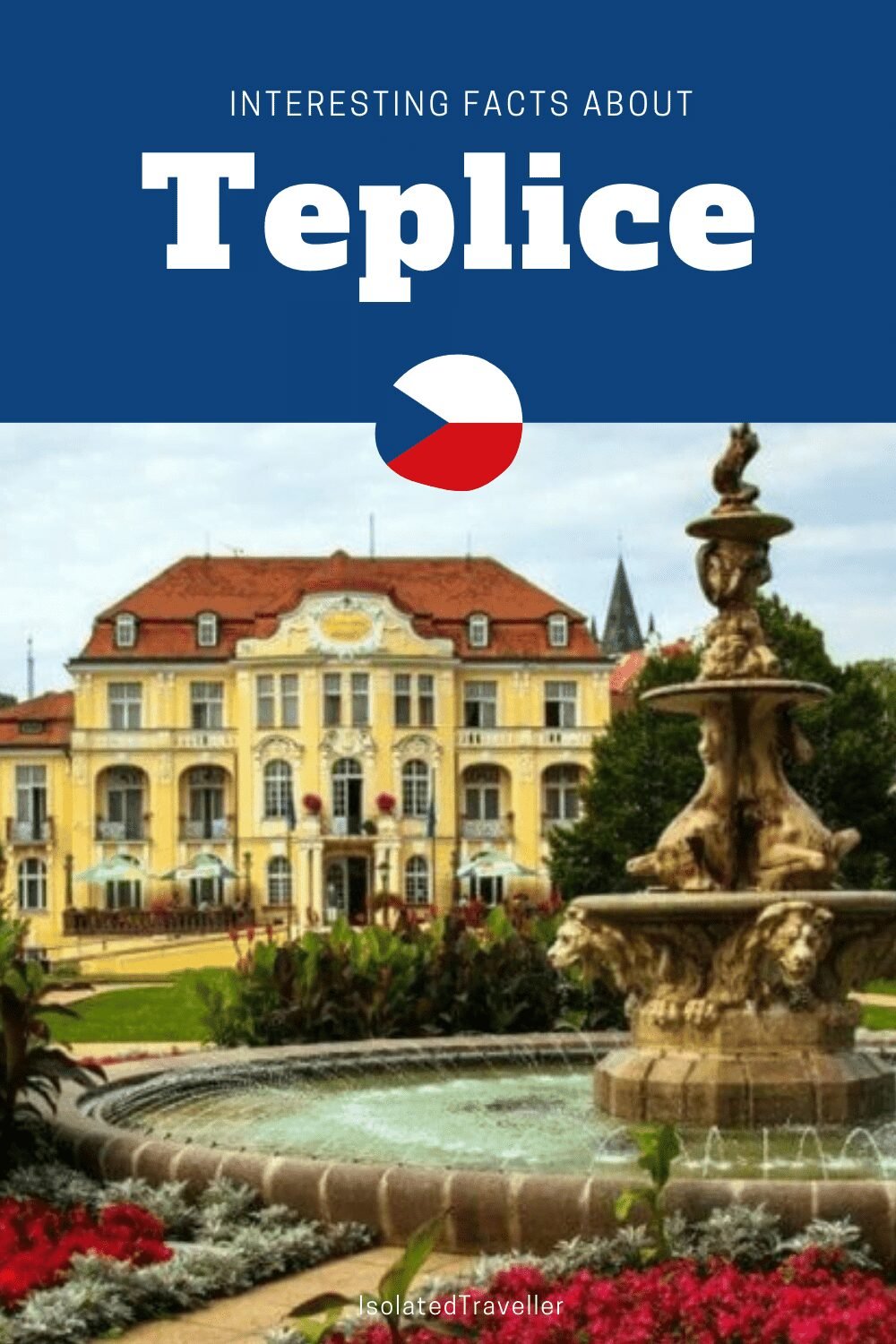Facts About Teplice
-
Teplice is a city in the Ústí nad Labem Region of the Czech Republic and the capital of the Teplice District.
-
Teplice is the Czech Republic’s second-largest spa town, after Karlovy Vary.
-
The municipal area comprises the administrative parts of Teplice proper, Hudcov, Nová Ves, Prosetice, Řetenice, Sobědruhy and Trnovany.
-
According to the 1541 Annales Bohemorum by chronicler Wenceslaus Hajek, the thermal springs are fabled to have been discovered as early as 762; however, the first authentic mention of the baths occurred in the 16th century.
-
The estimated Population of Teplice is 49,514.
-
The settlement of Trnovany was first documented in a 1057 deed, while Teplice proper was first mentioned about 1158, when Judith of Thuringia, queen consort of King Vladislaus II of Bohemia, founded a Benedictine nunnery ad aquas calidas (“at the hot springs”), the second in Bohemia.
-
Teplice is home to the professional football club FK Teplice playing in the Czech First League.
-
Fossils of an elasmosaurid plesiosaur (large carnivorous marine reptile from the Cretaceous period) were found near Teplice at the end of the 19th century. In the village of Hudcov (a part of Teplice), plesiosaur Cimoliasaurus teplicensis was described in 1906 by Czech paleontologist Antonín Frič.
-
The name “Teplice” is derived from the Old Czech, meaning “hot spring”.
-
Teplice in August 1813 was the site where Emperor Francis I of Austria, Emperor Alexander I of Russia and King Frederick William III of Prussia first signed the triple alliance against Napoleon I of France that led to the coalition victory at the nearby Battle of Kulm.


